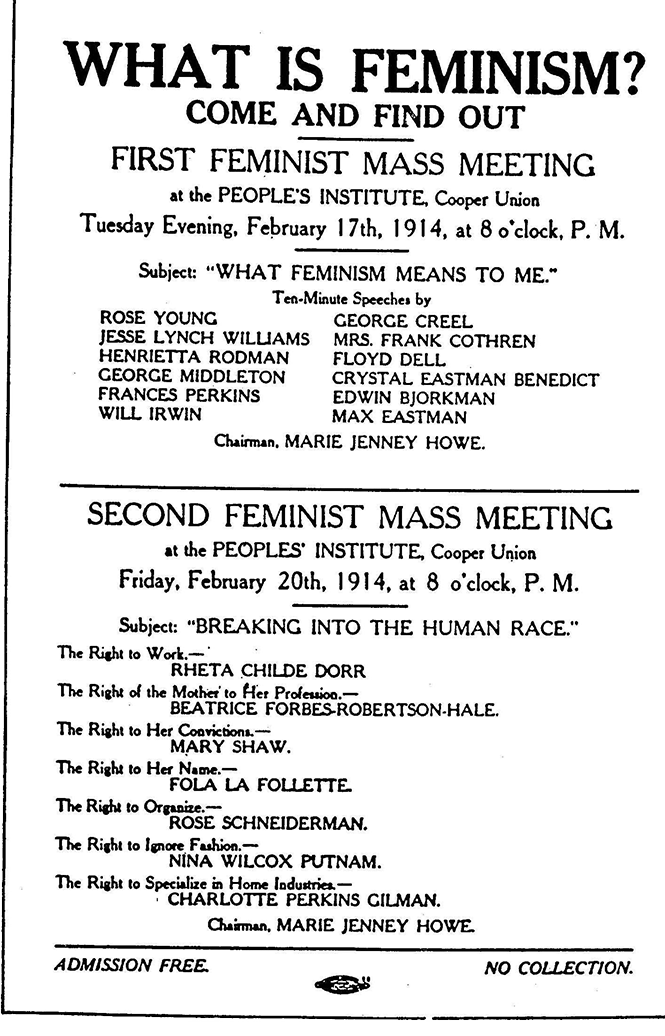Background
The term “feminist” came into popular usage after 1910. It was embraced by and used to describe women on the political left. Feminists were women who saw suffrage as only a small fraction of the bigger “woman problem.” Many feminists, like the radical Emma Goldman, were drawn to socialist or anarchist politics, which emphasized a woman’s right to be equal to men in all things. Feminists argued that women needed to fight for their rights in every aspect of their lives—economic, social, political, and even sexual. Debate over politics and ideas was an important part of feminism. Although not all feminists agreed, they shared a common belief in liberating women from traditional domestic roles imposed by the patriarchy.
About the Image
Marie Jenney Howe was the founder of the radical feminist group Heterodoxy in Greenwich Village, New York City. In 1914, she hosted two mass meetings to introduce a wider audience to feminism. This is an advertisement for this two-part event. According to The New York Times, a large crowd nearly filled the auditorium to capacity on the first night. The list of speakers included some of New York City’s most notable radical activists, including future Secretary of Labor Frances Perkins, feminist writer Charlotte Perkins Gilman, teachers’ rights advocate Henrietta Rodman, lawyer Crystal Eastman, and labor activist Fola La Follette, among others.
Vocabulary
- convictions: Personal beliefs.
- feminism: The belief that men and women are equal.
- Heterodoxy: A radical discussion group active in Greenwich Village, New York.
- patriarchy: A society in which fathers are in charge of the family, men are in charge of wider society, and women and children are second class citizens.
- radical: Extreme.
Discussion Questions
- What is a mass meeting? What was the point of this event and what do you think the organizers hoped to accomplish?
- Both men and women spoke at the first meeting. What does this tell us about this group and its understanding of feminism?
- What were some of the topics covered during the second meeting, and what does this tell us about how these individuals defined feminism?
Suggested Activities
- APUSH Connection: 7.4: The Progressives
- Review the list of topics addressed in the second meeting and ask students to think about how they connect to feminism and women’s rights today. What are current debates around fashion, working mothers, last names, and other aspects of feminism?
- Although suffrage was not officially listed on the agenda, most feminists favored suffrage. Compare this advertisement to the suffrage materials in Section 3 – Woman Suffrage. How did feminists differ in their politics from the wider suffrage movement? Why might the suffrage movement have shied away from embracing a more radical view like feminism?
- Cooper Union held many mass meetings organized by a range of organizations and hosts. Read Clara Lemlich’s life story and learn about a different meeting that was held in the same space. Why were mass meetings and important tool for activists in this era?
Themes
ACTIVISM AND SOCIAL CHANGE







